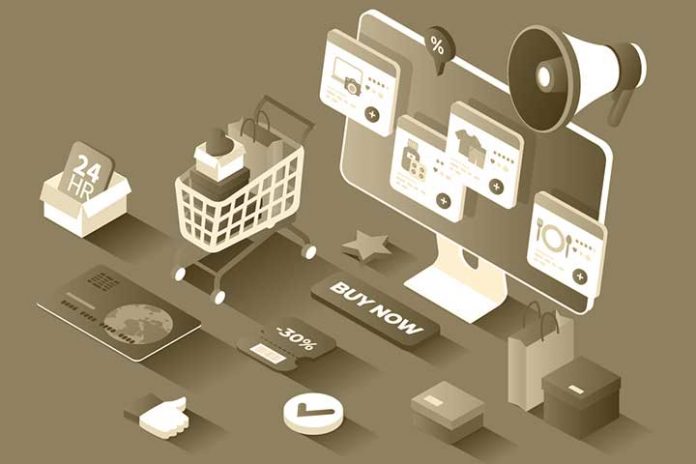Electronic commerce, online commerce, online store, eCommerce… call it what you want, but you must know if and how you need one!
After all, we are talking about selling directly online, whether or not you have a physical store.
Types of eCommerce
There can be as many electronic businesses as there are business models:
- B2C: Business-to-Consumer. It is the sale between private customers and companies, which is the most typical model of electronic commerce.
- B2B: Business-to-Business. B2B e-commerce sells from business to business.
- B2E: Business-to-Employee. In this case, it refers to online sales between the company and the employee. These online sales are made through their intranet, where they include offers or products with special conditions for their workers.
- B2A: Business-to-Administration. In this case, online sales occur when electronic commerce provides a service to the public administration.
In this sense, there are even more categories: C2B, where individuals sell to companies, or C2C, where online purchases and sales are made between individuals, as in Wallapop, for example.
Another way to categorize them is the business model by which online sales take place :
Online store with its own products/services: the typical online store, similar to a physical one but online.
Dropshipping is a type of electronic commerce through which, as a seller, the products for sale are not produced or stored. This is so because the product is purchased directly from a supplier without having inventory. It simply acts as an intermediary between customers and dropshipping manufacturers or distributors who create, pack and ship it.
Affiliate eCommerce: refers the customer to another store, and this store pays a commission when the sale is confirmed. In this way are, for example, most online price comparators, such as Innovagamer’s gaming price comparison website.
Membership is based on periodic subscriptions and is a good option in recurring sales. For example, it would be the website of a football club. A membership section will allow subscribers to manage all kinds of procedures more comfortably than going to the offices in person. Ideally, within their private season ticket holders, members could carry out tasks such as season ticket renewal, ticket request, seat modification, merchandising purchase, etc.
Marketplace: in this case, we are not dealing with an online store; it is a set of online stores on the same website. It is in no case its website, and the moment it stops appearing on the marketplace, it ceases to exist online.
Any of these models can be valid for an SME or a self-employed person, but it will depend on the specific business model, the target, and other issues, to carry out online sales in one way or another.
Also Read: How To Make Money Online: 8 Ways To Achieve It
What should e-commerce for SMEs and freelancers have?
Electronic commerce, whatever it may be, must be at least:
- Usable from any screen size and the main current browsers
- Intuitive and simple
- Fast
- Manage inventory and catalogue
- Configure product categories
- Process online payments and be able to enter offline payments
- Provide sales reports
- Have the possibility of offering discounts and promotions
- Configure shipping costs and carriers
And from here on, think about what else you can offer your customers! An online chat? An online booking calendar? Offer to cross-sell? Highlight the best-selling products according to the user’s profile.
We believe that a key factor for e-commerce to work well and be profitable is to make the user experience similar to that of shopping in physical places, with the comforts that online sales provide, that is:
1. They have to find you; you have to have a store; the more visible, the better. In the online environment, this is equivalent to web positioning.
2. The image is very important; it must reflect your line of business and be adapted to your mission, vision, objectives, and potential clients. This is customization in web design and development.
Make the user experience similar to shopping in physical places, with the comforts that online sales provide
3. The shopping experience must be simple, just as in a physical store; the items are neither hidden, mixed, nor disordered, and you have staff, information posters, etc., that help the customer in the purchase process. In the case of e-commerce, this means making the user experience (UX) as simple and pleasant as possible and correctly describing what you are selling, making the structure of the web as simple as possible, making the menu intuitive, that you were highlighting promotions or new items, that the images of the products are well done and have adequate size, perhaps that they can be enlarged, that the web page does not take too long to load, that the customer knows how returns work, that is responsive, etc.
4. Provide the payment methods you can; the more options, the better; normally, in physical stores, you can pay in cash and by card, in few places accept only one form of payment. In e-commerce, you can facilitate many forms of payment: cash on delivery, Paypal, credit card, debit card, mobile-specific payment methods, etc. In other words, you can combine offline and online payment methods.
5. The customer of the physical store usually takes their products immediately, and in case of large quantities and they need the purchase to be sent, they know the shipping costs and the time it will take to reach them; on many occasions, they even know the approximate time where you will receive your order. Leave these issues specified in your e-commerce, and minimize expenses and shipping time as much as possible; it is proven that it is a strategy that works.

